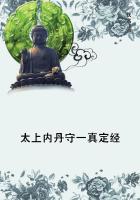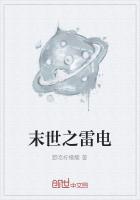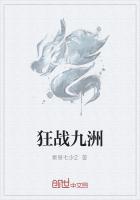In the great mysteries solemnised at Eleusis in the month of September the union of the sky-god Zeus with the corn-goddess Demeter appears to have been represented by the union of the hierophant with the priestess of Demeter, who acted the parts of god and goddess. But their intercourse was only dramatic or symbolical, for the hierophant had temporarily deprived himself of his virility by an application of hemlock. The torches having been extinguished, the pair descended into a murky place, while the throng of worshippers awaited in anxious suspense the result of the mystic congress, on which they believed their own salvation to depend. After a time the hierophant reappeared, and in a blaze of light silently exhibited to the assembly a reaped ear of corn, the fruit of the divine marriage. Then in a loud voice he proclaimed, Queen Brimo has brought forth a sacred boy Brimos, by which he meant, The Mighty One has brought forth the Mighty. The corn-mother in fact had given birth to her child, the corn, and her travail-pangs were enacted in the sacred drama. This revelation of the reaped corn appears to have been the crowning act of the mysteries. Thus through the glamour shed round these rites by the poetry and philosophy of later ages there still looms, like a distant landscape through a sunlit haze, a ****** rustic festival designed to cover the wide Eleusinian plain with a plenteous harvest by wedding the goddess of the corn to the sky-god, who fertilised the bare earth with genial showers. Every few years the people of Plataea, in Boeotia, held a festival called the Little Daedala, at which they felled an oak-tree in an ancient oak forest. Out of the tree they carved an image, and having dressed it as a bride, they set it on a bullock-cart with a bridesmaid beside it. The image seems then to have been drawn to the bank of the river Asopus and back to the town, attended by a piping and dancing crowd. Every sixty years the festival of the Great Daedala was celebrated by all the people of Boeotia; and at it all the images, fourteen in number, which had accumulated at the lesser festivals, were dragged on wains in procession to the river Asopus and then to the top of Mount Cithaeron, where they were burnt on a great pyre. The story told to explain the festivals suggests that they celebrated the marriage of Zeus to Hera, represented by the oaken image in bridal array. In Sweden every year a life-size image of Frey, the god of fertility, both animal and vegetable, was drawn about the country in a waggon attended by a beautiful girl who was called the god's wife. She acted also as his priestess in his great temple at Upsala. Wherever the waggon came with the image of the god and his blooming young bride, the people crowded to meet them and offered sacrifices for a fruitful year.
Thus the custom of marrying gods either to images or to human beings was widespread among the nations of antiquity. The ideas on which such a custom is based are too crude to allow us to doubt that the civilised Babylonians, Egyptians, and Greeks inherited it from their barbarous or savage forefathers.
This presumption is strengthened when we find rites of a similar kind in vogue among the lower races. Thus, for example, we are told that once upon a time the Wotyaks of the Malmyz district in Russia were distressed by a series of bad harvests. They did not know what to do, but at last concluded that their powerful but mischievious god Keremet must be angry at being unmarried. So a deputation of elders visited the Wotyaks of Cura and came to an understanding with them on the subject. Then they returned home, laid in a large stock of brandy, and having made ready a gaily decked waggon and horses, they drove in procession with bells ringing, as they do when they are fetching home a bride, to the sacred grove at Cura. There they ate and drank merrily all night, and next morning they cut a square piece of turf in the grove and took it home with them. After that, though it fared well with the people of Malmyz, it fared ill with the people of Cura; for in Malmyz the bread was good, but in Cura it was bad. Hence the men of Cura who had consented to the marriage were blamed and roughly handled by their indignant fellow-villagers. What they meant by this marriage ceremony, says the writer who reports it, it is not easy to imagine. Perhaps, as Bechterew thinks, they meant to marry Keremet to the kindly and fruitful Mukylcin, the Earth-wife, in order that she might influence him for good. When wells are dug in Bengal, a wooden image of a god is made and married to the goddess of water.
Often the bride destined for the god is not a log or a cloud, but a living woman of flesh and blood. The Indians of a village in Peru have been known to marry a beautiful girl, about fourteen years of age, to a stone shaped like a human being, which they regarded as a god (huaca). All the villagers took part in the marriage ceremony, which lasted three days, and was attended with much revelry. The girl thereafter remained a virgin and sacrificed to the idol for the people. They showed her the utmost reverence and deemed her divine.
Every year about the middle of March, when the season for fishing with the dragnet began, the Algonquins and Hurons married their nets to two young girls, aged six or seven. At the wedding feast the net was placed between the two maidens, and was exhorted to take courage and catch many fish. The reason for choosing the brides so young was to make sure that they were virgins. The origin of the custom is said to have been this. One year, when the fishing season came round, the Algonquins cast their nets as usual, but took nothing.














